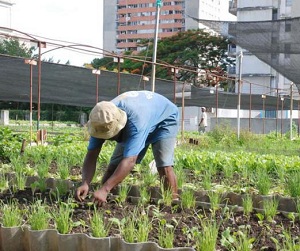 Responsibility and constancy have characterized 33 years of exemplary, dedicated work by the people to assure the country’s food security. Those who have participated in Cuba’s Urban, Suburban, and Family Agriculture Program understand well the importance of their efforts across the entire island.
Responsibility and constancy have characterized 33 years of exemplary, dedicated work by the people to assure the country’s food security. Those who have participated in Cuba’s Urban, Suburban, and Family Agriculture Program understand well the importance of their efforts across the entire island.
The director of the economically critical program, Dr. Elizabeth Peña Turruellas, shared with Granma the main findings gathered during the national leadership group’s 87th tour of the country’s provinces, conducted between October 13 through December 22, last year.
Municipalities with the most progress, scoring 95% on the evaluation rubric:
-Viñales
-Minas de Matahambre
-Sancti Spíritus
-Consolación del Sur
-Los Palacios
-Bayamo
-Puerto Padre
-Cerro
-Habana Vieja
-Boyeros
-Segundo Frente
-Güira de Melena
Fundamental elements evaluated during the tour
1. Production of green vegetables in the different modalities. Visits to all organic community gardens.
2. Production of medicinal plants.
3. Dedication of yards and small plots to food production.
4. Self-sufficiency on the community level.
5. Implementation of the National Food Sovereignty and Nutritional Education Plan at the municipal level.
Delivery of medicinal plants to pharmaceutical industry
-111% of planned volume delivered by the end of November
-674.2 tons delivered (608.7 projected)
-Commitments not met in Mayabeque and the Isle of Youth
-Commitment to deliver specific items not met in several provinces, in particular
Mayabeque, Cienfuegos and the Isle of Youth.
Green vegetables
9 ,416 hectares of green vegetables planted nationally
8.4 m2 per capita devoted to this type of produce
Ten or more square meters per capita planted
-Artemisa (13.3 m2)
-Santiago de Cuba (10.1 m2)
-Guantánamo (12,.1 m2)
-Holguín (10 m2)
*Some 40,000 planted beds were damaged by rain associated with Tropical Storm Eta, limiting completion of plans to 99%, with 1,155,413 tons harvested. Noted on the tour were immediate efforts to recover these losses, with all damaged beds re-planted, allowing projections for 2020 to be met.
Seed production
-Progress was observed, nonetheless, deficiencies were noted in the evaluations of 21 farms
-One farm was evaluated as poor, in the municipality of Martí, in the province of Matanzas.
-Farms evaluated as acceptable in the following municipalities:
-Alquízar
-Bahía Honda
-Artemisa
-San Nicolás de Bari
-Bejucal
-Melena del Sur
-Pedro Betancourt
-Cifuentes
-Sagua la Grande
-Cienfuegos
-Palmira
-Chambas
-Santa Cruz del Sur
-Guáimaro
-Frank País
-Rafael- Freyre
-Río Cauto
-Santiago de Cuba
-Guantánamo
-Yateras
Municipality evaluated as acceptable
-Niceto Pérez
Municipality with the most problems
-Isle of Youth Special Municipality
*A special tour was conducted on the Isle of Youth, including visits to 10 People’s Councils, with deficiencies noted at 70% of sites. Problems were observed in the production and use of organic compost; the cultivation of medicinal plants; the management of suburban farms; the planting of animal fodder; and ecological management of pests, among other shortcomings, as well as inadequate attention to the workforce at the Urban Farm UEB.
Family yards and plots linked to the program
Playing an outstanding role in this work are the Federation of Cuban Women and Committees for the Defense of the Revolution, as well as organizations like the Young Communists League, the Veteran Combatants Association, the National Association of Small Farmers, the Federation of Cuban Workers, and the Association of Cuban Agricultural and Forestry Technicians, helping to catalyze greater food production at this level.
Most outstanding provinces:
107,000 yards and plots in Havana
72,000 yards in Las Tunas
71,000 yards in Santiago de Cuba
61,000 yards in Camagüey
60,000 yards in Matanzas
Organic compost
Insufficient use and presence of micro compost production centers were observed, as well as low fertility of soils and substrate at community gardens, caused fundamentally by limited availability of transportation for the delivery of compost, implying the need for greater use of animal-powered means. Through November 317,207 tons of organic compost had been applied to soils, representing only 37% of the demand at this level.
Training
In all of the country’s municipalities, one community was selected for special training with the participation of the city Superintendent and presidents of People’s Councils, Ministry of Agriculture representatives, leaders of mass and political organizations, as well as residents, with the goal of reaching greater self-sufficiency in meeting the community’s nutritional needs, by supplying 30 pounds of produce per capita every month, to include root vegetables, green vegetables, fruit, and grains, plus five kilos of small livestock meat. A total of 1,800 persons participated.
Another training and discussion program took place in all provinces and the Isle of Youth Special Municipality focused on implementation of the National Food Sovereignty and Nutritional Education Plan at the municipal level. Some 4,000 people participated, from different bodies, mass and political organizations involved in Locally Sovereign and Sustainable Food Systems.
(Taken from Granma)